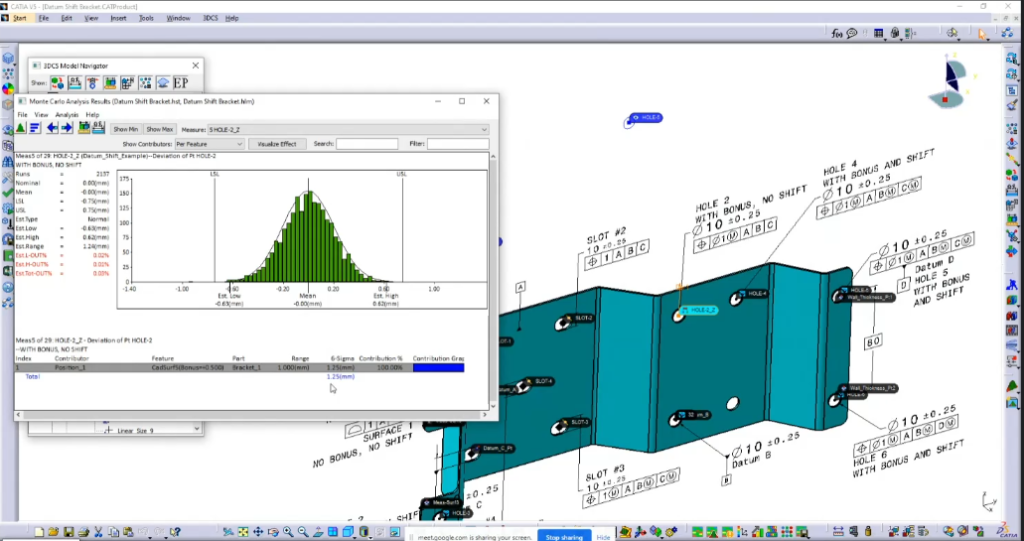Mastering GD&T: Essential Tips for Geometric Dimensioning and Tolerancing

What is Geometric Dimensioning and Tolerancing (GD&T)?
GD&T stands for Geometric Dimensioning and Tolerancing. It is a symbolic language and set of standards used in engineering and manufacturing industries to define and communicate the geometric requirements and allowable tolerances for parts and assemblies. GD&T provides a precise and universal way to specify the form, orientation, and location of features on a part, ensuring that they meet the design intent and can be manufactured and inspected accurately. By using GD&T, engineers can effectively communicate design requirements, improve manufacturing efficiency, enhance product functionality, and ensure quality control throughout the production process. manner.
The Importance of GD&T in Engineering and Manufacturing Processes
Clear Communication: GD&T provides a precise and standardized language to communicate design requirements between design engineers, manufacturing teams, and suppliers. It eliminates ambiguity and ensures everyone interprets the specifications in the same way, reducing errors and miscommunication.
Enhanced Design Functionality: GD&T allows engineers to specify complex geometric requirements, such as true position, profile, and orientation. This enables the creation of more functional designs, giving engineers greater flexibility in designing parts and assemblies that meet specific functional and performance criteria.
Manufacturing Efficiency: By using GD&T, manufacturers can optimize their production processes. The precise dimensional and tolerancing information provided by GD&T allows for better process planning, tooling selection, and machining strategies, resulting in improved manufacturing efficiency and reduced scrap and rework.
Quality Control and Inspection: GD&T provides a framework for effective quality control and inspection processes. By clearly defining the acceptable tolerances and geometric requirements, GD&T helps manufacturers ensure that the produced parts meet the design intent and are within the specified limits. This facilitates faster and more accurate inspection, reducing the chances of non-conforming parts reaching the market.
Interchangeability and Assembly: GD&T aids in achieving interchangeability of parts and facilitates smooth assembly processes. By specifying the form, orientation, and location of features, GD&T enables parts from different suppliers to fit together precisely, reducing assembly issues and ensuring proper functionality.
Global Standardization: GD&T is governed by internationally recognized standards, such as the ASME Y14.5 standard. This standardization enables engineers and manufacturers worldwide to communicate and collaborate effectively, promoting interoperability and facilitating global trade and supply chain integration.

Benefits and Applications of GD&T
Geometric Dimensioning and Tolerancing (GD&T) offers numerous benefits and applications in engineering and manufacturing. Firstly, GD&T improves communication by providing a standardized language for specifying geometric and dimensional requirements, reducing ambiguity and misinterpretation. Secondly, it enhances design functionality by allowing engineers to define complex geometric features, enabling the creation of more functional and optimized designs. Thirdly, GD&T improves manufacturing efficiency by facilitating process planning, tooling selection, and machining strategies based on precise tolerance and dimension information. It also supports quality control and inspection processes by establishing clear requirements, ensuring that parts and assemblies meet design specifications. Additionally, GD&T promotes interchangeability and smooth assembly, reducing rework and improving product performance. Furthermore, it can lead to cost reduction by optimizing tolerances and manufacturing processes. Finally, GD&T’s global standardization ensures effective communication and collaboration among engineers and manufacturers worldwide. Overall, GD&T provides a comprehensive framework for precise design, manufacturing, and quality control, benefiting various industries and applications
GD&T Components and Concepts
Feature Control Frames: Feature control frames are used to specify the geometric characteristics, tolerances, and datums of a specific feature on a part. They consist of symbols and values that indicate the type of tolerance, the tolerance zone shape, and the tolerance value.
Datums: Datums are reference points or planes used as a basis for establishing the geometric relationships and tolerances of features on a part. They serve as the origin from which other features are measured. Datums are represented by letters and are identified in the feature control frames.
Tolerance Zones: Tolerance zones define the acceptable variations in the geometric characteristics of a feature. These zones determine the permissible limits within which the actual part dimensions must fall to meet the design requirements. Tolerance zones can be cylindrical, flat, or spherical, depending on the feature being controlled.
Form, Orientation, and Location: GD&T covers three main aspects of geometric control. Form refers to the shape or profile of a feature, such as straightness, flatness, or roundness. Orientation relates to the angular position or tilt of a feature, including perpendicularity, parallelism, or angularity. Location defines the position of a feature relative to other features or datums, such as position, concentricity, or symmetry.
True Position: True position is a critical concept in GD&T and is used to control the location of a feature relative to a specified datum or datums. It combines the requirements of both location and form, ensuring that the feature’s center or axis lies within a specified tolerance zone.
Profile: Profile is another important concept in GD&T that controls the overall shape, including both form and location, of a feature. It defines a boundary or envelope that the actual feature must conform to, ensuring proper fit, assembly, and function.
What is Datum in GD&T?
In Geometric Dimensioning and Tolerancing (GD&T), a datum is a reference feature or surface used to establish a coordinate system for measurements and tolerance specifications. It provides a common starting point and reference for defining the location, orientation, and form of other features on a part. By using datums, engineers ensure consistent and accurate dimensional control in the design, manufacturing, and inspection processes.
Conclusion
Geometric Dimensioning and Tolerancing (GD&T) is a powerful tool that brings numerous benefits to engineering and manufacturing processes. By providing a standardized language for specifying geometric requirements, GD&T improves communication and reduces ambiguity. It enables engineers to create more functional designs with complex geometric features, enhancing the overall functionality and performance of products. GD&T also plays a vital role in improving manufacturing efficiency by optimizing processes, reducing scrap and rework, and ensuring proper assembly and interchangeability of parts. Additionally, GD&T facilitates effective quality control and inspection, leading to improved product quality and reduced non-conformities. Its global standardization ensures consistent practices and fosters collaboration across industries and borders. In conclusion, GD&T is an indispensable part of modern engineering and manufacturing, enabling precise design, efficient production, and reliable quality control, ultimately contributing to enhanced product quality and customer satisfaction.
Book a Free Demo, now!
Know more about our Engineering courses with Job Assistance!


